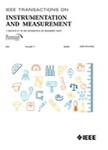版权所有:内蒙古大学图书馆 技术提供:维普资讯• 智图
内蒙古自治区呼和浩特市赛罕区大学西街235号 邮编: 010021

作者机构:Donghua Univ Coll Informat Sci & Technol Shanghai 201620 Peoples R China Univ Shanghai Sci & Technol Coll Opt Elect & Comp Engn Shanghai 200093 Peoples R China
出 版 物:《IEEE TRANSACTIONS ON INSTRUMENTATION AND MEASUREMENT》 (IEEE Trans. Instrum. Meas.)
年 卷 期:2025年第74卷
核心收录:
学科分类:0808[工学-电气工程] 08[工学] 0804[工学-仪器科学与技术]
基 金:Shanghai Pujiang Program [22Pj1423400, 23Pj1409900] Shanghai Sailing Program [22YF1401300] Natural Science Foundation of Shanghai [20ZR1400400]
主 题:Temperature sensors Temperature measurement Temperature distribution Electromagnetic heating Optical fibers Microwave measurement Prediction algorithms Microwave ovens Heating systems Accuracy Automatic temperature control algorithm brain inspiration fiber optic temperature sensing system multisensor data temperature time series data prediction
摘 要:Due to the existence of electromagnetic standing waves, uniform heating and accurate temperature data collection during microwave cooking have always been a challenge. This article presents a multisource temperature data acquisition system for microwave heating environments and introduces a brain-inspired prediction algorithm based on data structure to enhance temperature control logic. First, a temperature monitoring system for microwave heating environments, termed fiber optic temperature sensing system (FOTS), is developed. This system consists of an eight-probe fiber optic temperature sensor (FOT) array and an infrared temperature sensor. Then, a brain-inspired audiovisual (BIAV) predictive algorithm is proposed to simulate the brain s integration mechanism. The core of this algorithm extracts key time series data, calculates trend features to output the related key moment labels, and puts forward a vision-enhanced LSTM for prediction. Finally, experiments demonstrate the accuracy of BIAV in predicting food temperatures using sensor data, and existing control algorithms are optimized and validated. The proposed FOTS and BIAV algorithm in microwave fields provide new ideas and methods for multisensor data processing. In addition, existing control algorithms are optimized using predicted accurate temperature values and 2-D temperature fields, making microwave heating more uniform and safer, which is of great significance for industrial control.